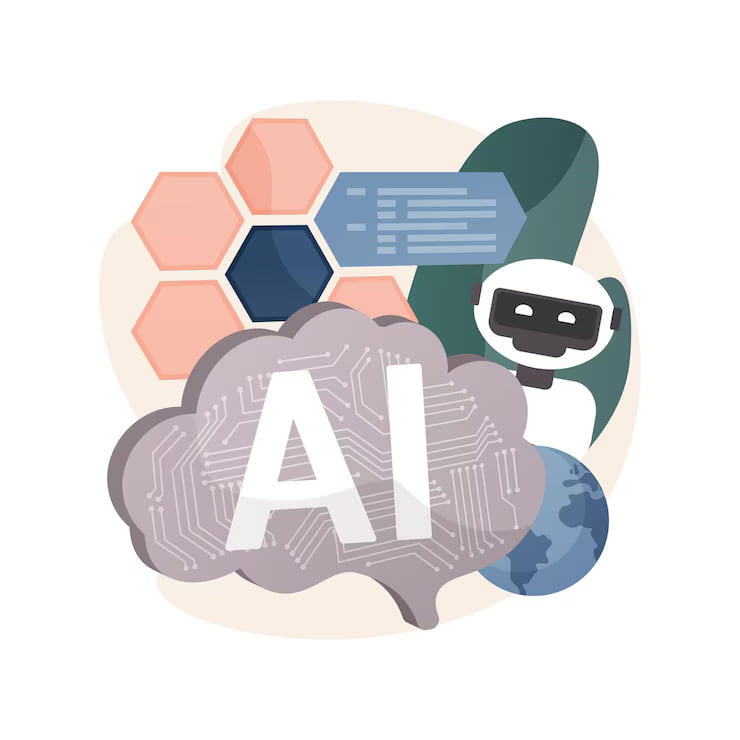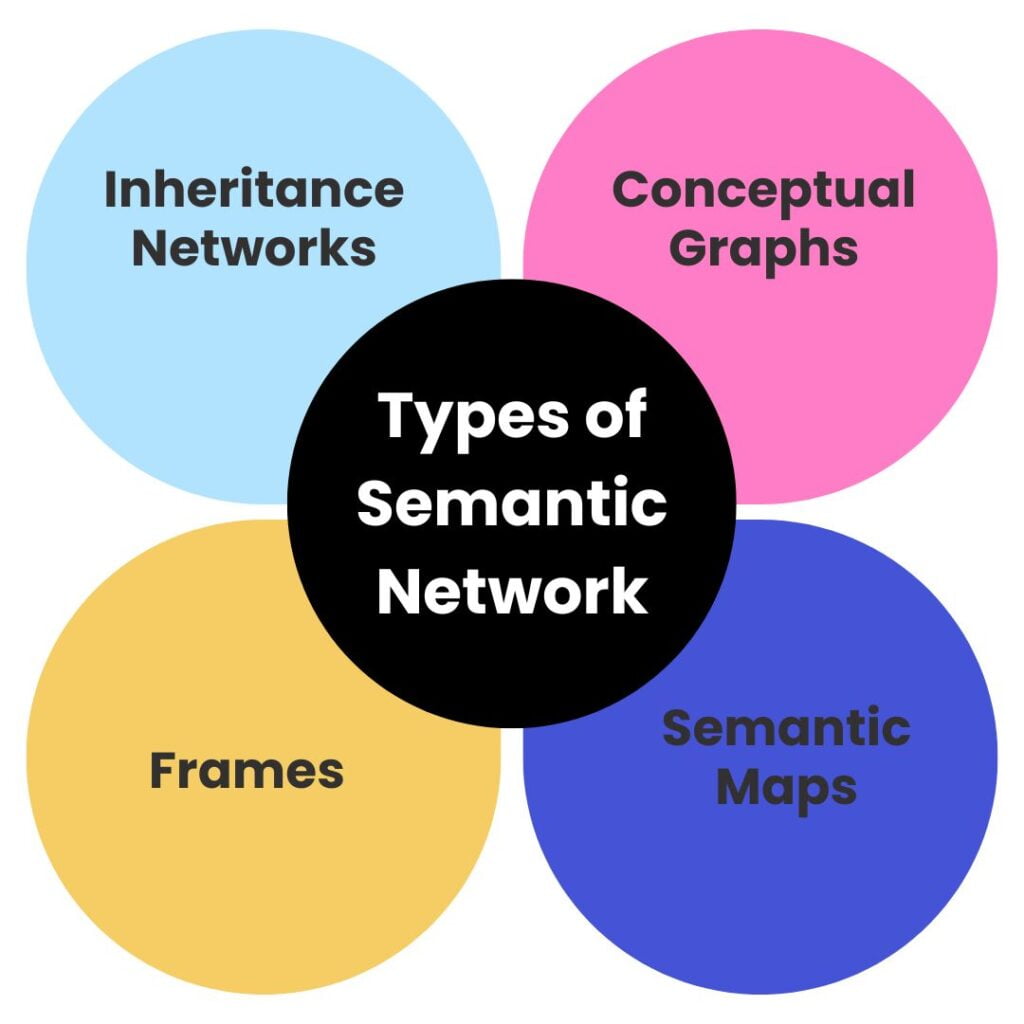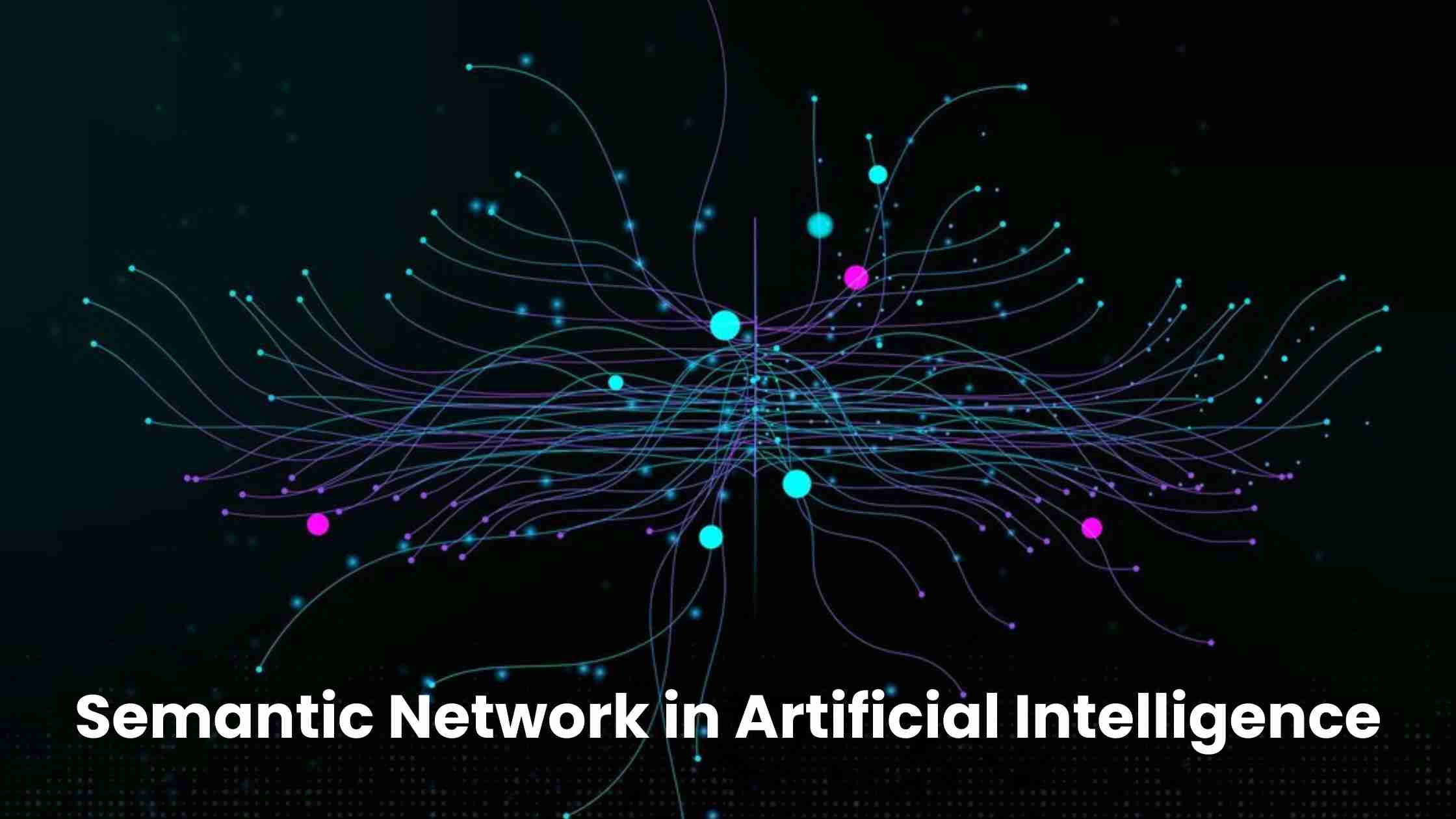Have you ever wondered how artificial intelligence systems can understand and process language? The answer is because of semantic networks in AI.
A semantic network in AI is a graphical representation of knowledge, where nodes represent concepts and edges represent relationships between them.
This blog post will discuss what is the semantic network in AI, providing examples, its types, and their benefits
Table of Contents
- Understanding Semantic Network in AI
- Examples of Semantic Networks in AI
- Types of Semantic Network
- Benefits of Semantic Network in AI
- FAQ’s
- Conclusion
Understanding Semantic Network in AI

A semantic network is a graphical representation that shows how different concepts relate to one another. It consists of nodes that represent objects, ideas, or situations. These nodes are connected by labeled links that define the relationships between them.
For example, a node for “apple” could be linked to a node for “fruit” with a labeled link saying “is-a.” This simple relationship helps machines understand that an apple is a type of fruit.
Semantic networks enable AI systems to accumulate knowledge by mapping out these conceptual relationships. They provide the foundational knowledge that powers applications like speech recognition, expert systems, and language understanding.
AI models can learn complex associations that mirror human reasoning capabilities by representing knowledge in an interconnected network structure. This contrasts with traditional databases which store information in isolated records.
Examples of Semantic Networks in AI
Semantic networks are used in various AI applications to represent and reason knowledge. Here are some examples of semantic networks in AI to help you understand how they work:
1. Natural Language Processing (NLP):
In NLP, semantic networks can be used to represent the meaning of words and their relationships. For example, a semantic network could have nodes for “dog,” “animal,” “bark,” and “pet,” with edges connecting them based on their relationships.
This can help AI systems understand the meaning of sentences and perform tasks like text summarization or question answering.
2. Knowledge Representation:
Semantic networks are commonly used to represent and store knowledge in expert systems and knowledge-based AI applications. For example, a semantic network could represent medical knowledge, with nodes for diseases, symptoms, treatments, and their interconnections.
3. Recommendation Systems:
E-commerce platforms and entertainment services often use semantic networks to represent user preferences and make personalized recommendations.
For example, a semantic network could have nodes for products, genres, actors, and users, with edges representing relationships like “bought,” “liked,” or “similar to.”
4. Social Network Analysis:
Social networks can be represented as semantic networks, with nodes representing people and edges representing relationships like “friend,” “family,” or “colleague.”
This can help analyze social connections, identify influential individuals, or recommend new connections.
By representing knowledge as a network of interconnected concepts, semantic networks allow AI systems to understand complex relationships, draw inferences, and reason about the information they contain.
Types of Semantic Network

Semantic networks come in different forms, each designed for specific uses. Here are some common types, explained in simple terms:
1. Inheritance Networks
These networks show how concepts are related in a hierarchy. For example, it can show that a “dog” is a type of “animal,” and an “animal” is a “living thing.” If a higher-level concept like “animal” has a property like “breathes,” then lower-level concepts like “dog” also have that property.
2. Conceptual Graphs
Conceptual graphs use nodes to represent concepts and the relationships between them. They make it easy for both humans and computers to understand knowledge. For instance, a graph could show “John owns a car” by having nodes for “John,” “car,” and “owns” connected properly.
3. Frames
Frames represent knowledge about specific concepts or objects. Each frame has slots that hold information about the concept’s properties or features. For example, a frame for “car” could have slots for things like “make,” “model,” “year,” and “color.”
4. Semantic Maps
Semantic maps are similar to concept maps, but they focus more on showing the relationships between concepts rather than just linking them. They are often used in education and psychology to help people understand and organize complex information.
These different types of semantic networks allow AI systems to represent and reason about knowledge in various ways, depending on what the application or domain requires.
Benefits of Semantic Network in AI

Semantic networks offer several advantages that make them valuable tools in artificial intelligence. Here are some key benefits:
1. Visual Representation
One of the biggest advantages of semantic networks is that they provide a visual way to represent knowledge.
The nodes and connections make it easy for humans to grasp how different concepts relate to each other.
This visual representation aids in understanding and communicating complex information effectively.
2. Organized Knowledge
Semantic networks allow AI systems to store and organize knowledge in a structured manner. By breaking down information into concepts and their relationships, it becomes easier to retrieve and process relevant data quickly and efficiently.
This organized knowledge representation is crucial for AI systems to perform tasks like reasoning and decision-making.
3. Inferencing Capabilities
Semantic networks enable AI systems to make inferences and draw conclusions based on the relationships between concepts.
By identifying connections and patterns within the network, AI can “think” and reason about the information it has, leading to more intelligent and insightful decision-making processes.
4. Flexibility and Scalability
Semantic networks are highly flexible and scalable, allowing for easy modification and expansion. As new information or relationships are discovered, they can be seamlessly integrated into the existing network structure.
This adaptability makes semantic networks well-suited for applications that require constant learning and knowledge updates.
5. Human-like Reasoning
By mimicking the way humans organize and connect ideas, semantic networks enable AI systems to reason and process information in a more human-like manner.
This can lead to more natural and intuitive interactions between humans and AI systems, improving the overall user experience.
Overall, semantic networks provide a powerful way to represent, organize, and reason about knowledge in AI systems, making them valuable tools for a wide range of applications, from natural language processing to expert systems and decision support systems.
FAQ’s
Semantic networks are important in AI because they help represent and organize knowledge in a way that mimics human thinking. This structured approach allows AI systems to make connections, draw inferences, and reason about information more effectively.
A semantic network represents knowledge as interconnected nodes (concepts) and links (relationships). Frames are a type of semantic network that represents specific concepts or objects, with slots that hold properties or attributes related to that concept.
Semantic network knowledge representation in AI is a way to organize and store information in the form of nodes (concepts) and links (relationships between concepts).
Conclusion
In conclusion, the semantic network in AI represents knowledge as interconnected nodes (concepts) and relationships, mimicking human thinking. This structured approach allows AI systems to efficiently store, organize, retrieve, and reason information, enabling intelligent decision-making and natural interactions. With its visual representation and flexibility, the semantic network plays a crucial role in developing intelligent, adaptable AI solutions across various applications.
Ajay Rathod loves talking about artificial intelligence (AI). He thinks AI is super cool and wants everyone to understand it better. Ajay has been working with computers for a long time and knows a lot about AI. He wants to share his knowledge with you so you can learn too!

